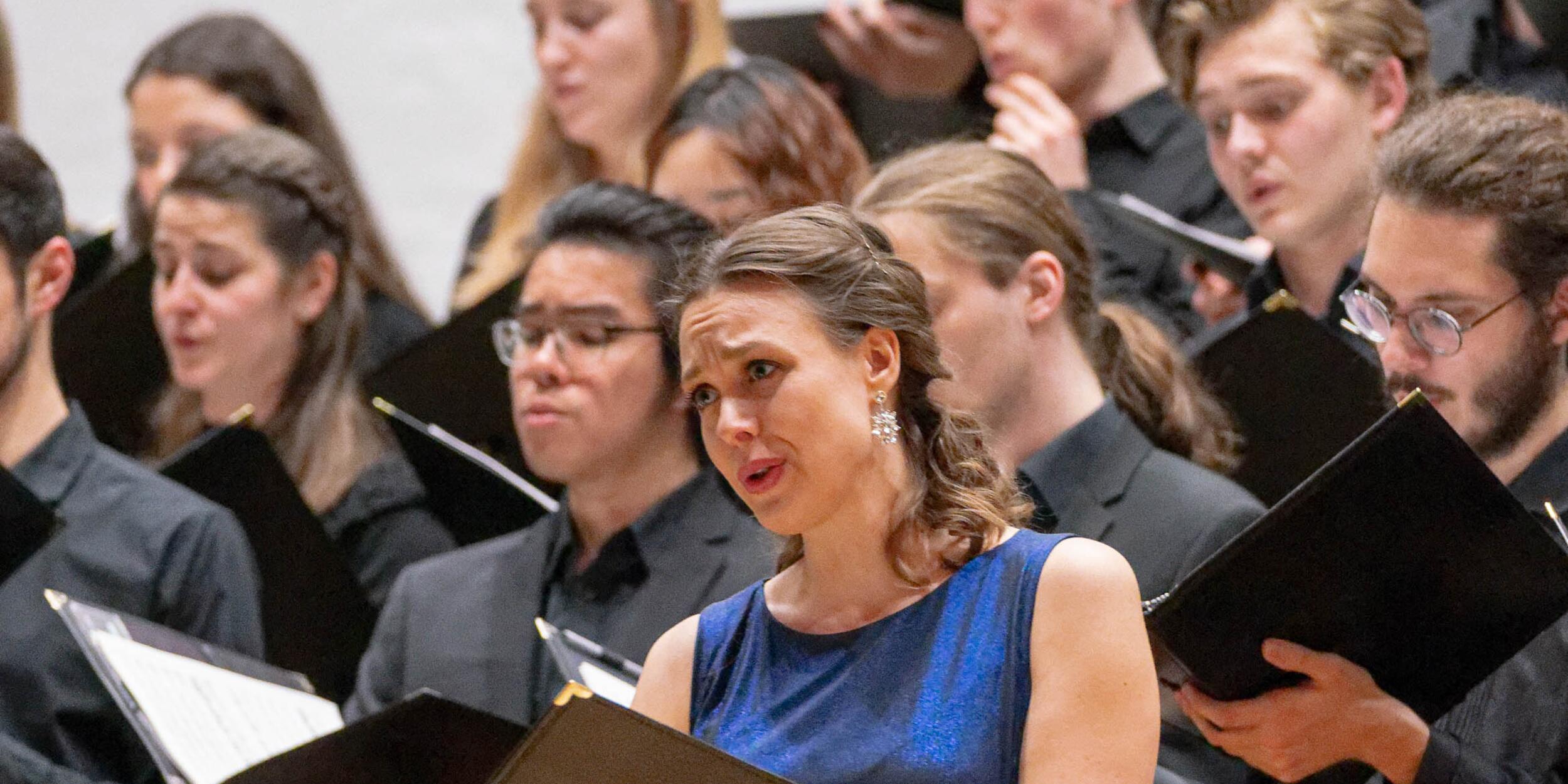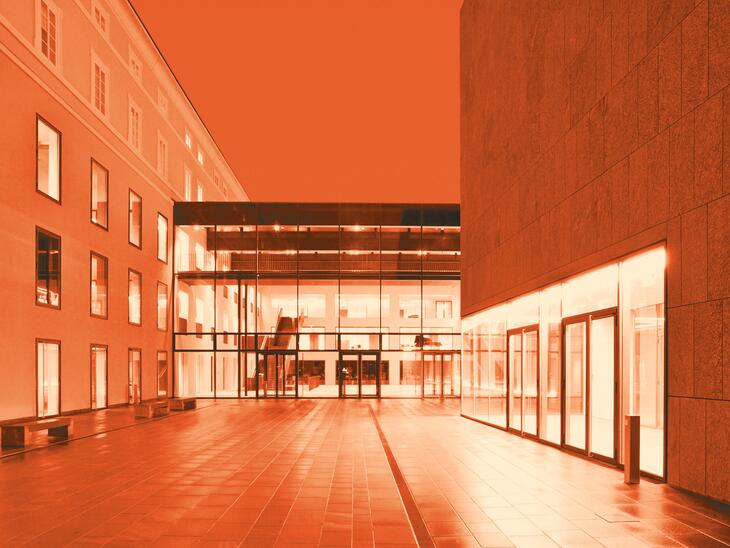Early doubts, late honors

Anton Bruckner and the Mozarteum University. A review with a look ahead to the commemorative year 2024 on Bruckner's 200th birthday.
"... The candidate is hereby free to apply again for the position of cathedral conductor and artistic director at the Mozarteum, and requests that this position be graciously conferred upon him. Already in 1861, as a composer, he underwent a conducting test for the same position to everyone's satisfaction; he now asks that this be graciously reviewed and waived..."
(Anton Bruckner's second application as Kapellmeister of the Dommusikverein and Mozarteum in 1868)
In 1861 and 1868, Anton Bruckner, then cathedral and parish organist in Linz, applied twice for the directorship of the Salzburg Cathedral Music Society, the predecessor institution of today's Mozarteum University Salzburg - and was rejected twice. The fact that the disappointed man in his mid-forties was subsequently awarded honorary membership may have been comforting and dignified - but it certainly couldn't buy the crisis-ridden self-doubter a "Seidel Bier", one of the few worldly pleasures that the former monastery student would have allowed himself. In retrospect, however, the Salzburg rejection must be seen as a decisive fork in the road in Bruckner's biography. For it was this that led to his reluctant move to Vienna, where he would eventually succeed his famous teacher Simon Sechter as professor of harmony and counterpoint at the Vienna Conservatory. In this context, one might even ask whether Bruckner could have written his great symphonies as the director of a small-town church music school, even if, as in the case of the Salzburg Cathedral Music Society, they were directly related to Mozart.
Musical Vienna was of a different caliber and it was thanks to this musical capital of the world - at the time! - it is thanks to this musical world capital that Bruckner was finally able to gain a foothold at the Mozarteum in Salzburg posthumously and through the back door, so to speak: in the form of the long-serving rector of this institution, Bernhard Paumgartner (1887-1971). From his father, the highly esteemed composer, piano accompanist and reviewer Dr. Hans Paumgartner, instilled in him an early enthusiasm for Bruckner's work, Bernhard Paumgartner recalled formative personal encounters with the aged Ansfeld master towards the end of his life: "In my boyhood, I was seen in front of the Karlskirche, in Alleegasse, and finally in Belvedere Park, resting on a bench in a high-collared overskirt, with a floppy hat, peasant shoes and harmonica pants, standing next to him, his faithful landlady 'Frau Kathi'. The last time I saw Bruckner was after a much-acclaimed performance of his 'Fourth' in a philharmonic concert (...) when he was brought down backwards from the Musikverein building in a stretcher, sickly and emaciated, via the simple 'Künstlerstiege'" (from Paumgartner: "Erinnerungen"). Paumgartner was certainly also responsible for the fact that Bruckner's symphonies are still an indispensable part of the Festival program to this day as a leading member of the first Festival Orchestra and later Festival President - in changing line-ups, but with constant regularity. The fact that the Mozarteum Orchestra Salzburg, which was also conducted by Paumgartner when it was founded, also recorded a cycle of all Bruckner symphonies under its then chief conductor Ivor Bolton after the 2000s may be a further indication of the extent to which Bruckner's Upper Austrian thick skull was finally able to assert itself in Mozart-influenced Salzburg.
In any case, there were fewer concerns in the field of church music. Bruckner's organ music remained a constant for later generations of organists, insofar as it could be passed down through earwitnesses, and his masses and smaller church music works exerted a strong influence in Salzburg at least until the time of the long-serving cathedral conductor Joseph Messner (1893-1969). Bruckner's a cappella choral works, which are naturally overshadowed by his symphonies on the concert stage but are among the highlights of Romantic choral music in terms of quality, also belong in this sacred environment. A glance at Bruckner's biography proves that this was not a whim of fate, but for objective reasons. Introduced meticulously to the Palestrina style by Sechter and familiarized with the special vocal style of this art, Bruckner was also intimately familiar with Gregorian chant and the old modes as an active church musician. The way in which Bruckner succeeded in combining this centuries-old church music heritage with the harmonic achievements of the 19th century must be considered a creative achievement of the first order. And there is another decisive factor in the fact that Bruckner also considered choral music alongside the symphony. After early experiences as a choral singer, Bruckner later worked as an ambitious choral conductor himself, leading his ensembles, such as the Liedertafel "Frohsinn" or the Männergesangverein "Sängerbund", to success even on an international level. All this, alongside official commissions such as that for the double-choir "Mass in E minor" for the inauguration of the Votive Chapel at the new Linz Cathedral in 1866, may have led to the fact that today we are in possession of such precious a cappella choral works as Bruckner's "Ave Maria", "Locus iste", "Christus factus est", "Os justi" and "Virga Jesse". Bruckner's penchant for mystical turns of phrase and tonal backdrops, which have been described in various places as "uplifting", place his vocal works far above the level of the liturgical music that was in vogue in the spirit of the burgeoning Cecilianism of his time.
It is therefore fitting that the Mozarteum University is opening the 2024 commemorative year for Bruckner's 200th birthday with a choral concert. On 19 January, the Mozarteum University Chamber Choir, under the direction of Prof. Jörn Andresen, will perform known and unknown choral works by the master in the parish church of St. Paul. In the spirit of university contextualization, references to predecessors such as Michael Haydn and Franz Schubert as well as successors such as Arvo Pärt and Eric Whitacre will be made. The fact that contemporary composers such as Ola Gjeilo and Eric Esenvalds also owe much to Bruckner's art of sound will also be demonstrated by the second a cappella project of the current academic year, when the chamber choir performs on the theme of "humaNature" in Salzburg's Kollegienkirche on the last weekend in May. However, the Mozarteum would not be the wide-ranging university that it is if Bruckner's symphonic oeuvre were not also comprehensively honored. The symphony orchestra - recently successful with Mahler's First in the Haus für Mozart - is planning a performance of one of the master's great symphonies for fall 2024. It is also safe to assume that the university will provide academic support for the Bruckner Year in addition to these artistic projects.
(First published in the Uni-Nachrichten / Salzburger Nachrichten on December 2, 2023)
-
19.1.—20.1.2024A-Cappella ConcertThe great musical ruler of the year 2024 is Anton Bruckner. Completely symphonic and church musician, Bruckner was also an ambitious and successful choir director.Concert· Free



